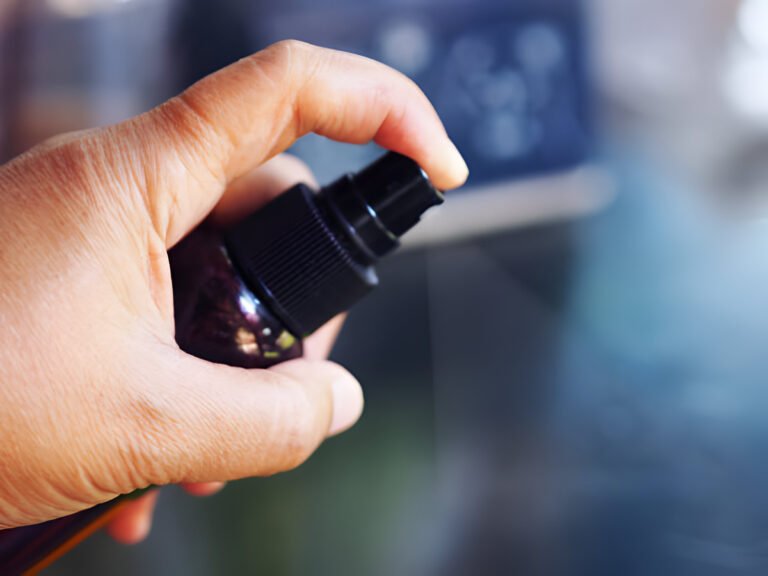Image Credit: Getty image
In today’s fast-paced world, the convenience provided by innovative household appliances such as the Samsung Self Clean Washer cannot be overstated. This washing machine is designed not only to make laundry chores easier but also to ensure that the washer tub itself remains free from moldy odors and buildup without the need for harsh chemicals. The Samsung washer’s Self Clean feature represents a significant advancement in appliance maintenance, promoting a clean washing machine environment through its efficient and self-sustaining cleaning cycle. As consumers seek more efficient ways to maintain their appliances, understanding the functionality and benefits of such features becomes essential.
This article will explore the workings of the Samsung washer Self Clean feature, guiding users on starting the self-clean cycle and providing tips for optimal use. From navigating the control panel to the correct type of laundry detergent and employing liquid bleach sparingly, these insights aim to empower Samsung Self Clean washer owners to maximize the lifespan and efficiency of their washing machine. Additionally, the article will offer maintenance tips to prevent the buildup of residue and eliminate moldy odors, ensuring that the appliance remains in top condition. Through this comprehensive overview, readers will gain valuable knowledge on maintaining a clean and efficient laundry environment.
How Does the Samsung Washer Self Clean Feature Work?
Prepping the Washer
To initiate the Self Clean cycle on a Samsung washer, one must ensure the washer tub is empty. This is crucial as the presence of laundry can interfere with the effectiveness of the cycle and potentially damage the items. Users should press the Self Clean button followed by the Start button to begin the cycle. It’s important to note that no detergents, bleach, or cleaning agents should be added, although a small amount of bleach may be used if there is an existing mold smell.
Cycle Process
The Self Clean feature is specifically designed to address areas within the tub that are not typically reached by regular washing cycles. This includes places where moisture and detergent residue may accumulate, potentially leading to mold formation. The cycle starts by soaking the tub, loosening any accumulated dirt and residue. Following this, the tub is spun at high speeds to detach and rinse away the dirt and mold. The process takes about one hour for top load washers and up to four hours for front load models.
Post-Clean Maintenance
After the Self Clean cycle, if suds or residues are observed, running another Self Clean cycle is recommended. The washer has a Self Clean reminder LED that activates after 20 cycles on top load models and 40 on front load models, signaling when another cycle is beneficial. Even if the reminder does not activate, it is advisable to run the Self Clean cycle at least once a month, or after every 20 cycles, to maintain optimal cleanliness and functionality.
Steps to Start the Self Clean Cycle
Turning On the Washer
To initiate the Self Clean cycle on a Samsung washer, first ensure that the washer tub is completely empty. This prevents any laundry from interfering with the cleaning process. Press the Power button to turn on the washer.
Setting Up the Cycle
After powering on the washer, locate and press the Self Clean button. This may also be labeled as Self Clean+ or Pure Cycle depending on the model. Once selected, simply press the Start button to begin the cycle. The washer will automatically set the duration of the cycle based on its model—approximately one hour for top load washers and four hours for front load models.
Optional: Adding Cleaning Agents
While it is not necessary to add any detergents or cleaning agents for the Self Clean cycle, the use of a small amount of liquid bleach is recommended if there is an existing mold smell. Ensure that any bleach is added directly to the washer tub before starting the cycle. For safety and effectiveness, do not mix bleach with any other chemicals or detergents. If using bleach, start the cycle immediately to prevent any potential damage or corrosion inside the washer.
Tips for Optimal Use of Self Clean Feature
To maximize the effectiveness of the Samsung Self Clean feature and maintain a clean and odor-free washer, follow these guidelines:
When to Run the Cycle
It is advisable to run the Self Clean cycle at least once a month or every 20 washes to prevent mold and mildew buildup. If the washer is used more frequently, the Self Clean indicator will illuminate after 20 washes in top-loading models and 40 washes in front-loading models. Running the cycle soon after the indicator lights up ensures optimal cleanliness.
Using Cleaning Agents
While the Self Clean cycle is designed to operate without the need for additional cleaning agents, using a small amount of liquid bleach can help eliminate existing mold odors. Add the bleach directly to the bleach compartment before starting the cycle. Ensure no other chemicals or detergents are mixed with the bleach to avoid damaging the washer.
Troubleshooting Common Issues
If suds or residue remain in the tub after a Self Clean cycle, running another cycle may be necessary. For persistent issues, such as the cycle not completing or the washer displaying error codes, ensure that the washer is properly powered. Disconnecting the power source for 5-10 minutes can reset the cycle. Additionally, always check that the washer tub is empty and free from water before initiating the Self Clean cycle to prevent any operational interruptions.
Conclusion
Throughout this comprehensive guide, we’ve delved into the innovative Samsung Self Clean Washer feature, elucidating how it fundamentally transforms appliance maintenance by automating the cleaning of the washer tub. By following the detailed steps to start the Self Clean cycle and adhering to the maintenance tips provided, users can significantly enhance the lifespan and efficiency of their Samsung washing machines. The importance of routine cleaning, proper use of cleaning agents, and the operational insights shared cannot be overstated for maintaining a clean, efficient laundry environment free from mold and odors.
The Samsung Self Clean Washer stands as a testament to the advancements in household appliance technology, aiming to simplify and improve our everyday chores. By understanding and utilizing the Self Clean feature effectively, users can enjoy not only a more hygienic wash but also contribute to the longevity and performance of their appliance. As we continue to seek efficient solutions in home maintenance, the application of such innovations plays a crucial role in enhancing our daily lives while also setting a benchmark for future technological advancements in household appliances.
FAQs
1. What should I put in my Samsung washer when using the self-clean feature?
To operate the self-clean cycle on your Samsung washer, ensure the drum is empty, select the Self Clean option, and then start the cycle. It is not necessary to add any cleaning agents. However, if there is a pre-existing mold odor, using bleach is recommended. Refer to our guide for more detailed instructions.
2. How can I clean and maintain my Samsung washing machine?
To effectively clean and maintain your Samsung washing machine, especially if you notice mold or a mildew odor, follow these steps:
- Run a Spin-only cycle.
- Add chlorine bleach.
- Select and run a Self Clean cycle.
- Manually wipe down the tub.
- Perform a Rinse+Spin cycle.
- Leave the washing machine open to air dry.
- Clean the pump filter, but note this is only applicable to front load models.
- If necessary, request professional service.
3. How frequently should the drum clean cycle be run on a Samsung washing machine?
The control panel of your Samsung washing machine will display a reminder for the ECO DRUM CLEAN+ cycle once every 40 washes. It is recommended to adhere to this frequency to maintain the optimal performance of your washing machine.
4. How does the self-cleaning feature in Samsung washing machines operate?
The self-cleaning feature in Samsung washing machines is designed to maintain the cleanliness and efficiency of the drum without the need for manual scrubbing or the use of harsh chemicals. This feature uses a combination of soaking, pulsating, and high-speed spinning to remove dirt and bacteria, effectively cleaning the drum and other internal components.
























+ There are no comments
Add yours